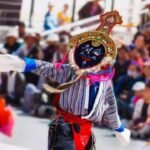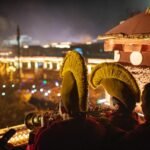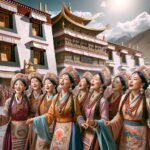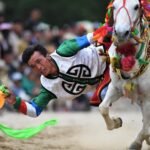The Essence of Wongkor Festival
The Wongkor Festival, a cornerstone of Tibetan agricultural culture, symbolizes the community’s hopes for a bountiful harvest. Derived from “vong” (fields or land) and “skor” (circling), Wongkor literally means circling the fields. Celebrated extensively in farming areas, it’s known as “Yarkyi” in regions like Lhatse and Dingri, signifying the joy of a comfortable summer day.
Timing and Cultural Significance
Held typically around mid-July, just before the grain ripens, the Wongkor Festival is a time-honored tradition that marks a pivotal moment in the agricultural calendar of Tibet.
First Day: A Tribute to the Deities
The festival commences with activities honoring the gods. Village leaders gather male and female shamans at an altar, presenting them with khata scarves and barley wine. The shamans invoke the deities and lead villagers in a ritualistic procession around the village, embodying blessings and spiritual protection.
Second Day: Procession and Ancient Rituals
The second day features a vibrant procession around the crop fields. Led by shamans with colorful “Dadar” arrows and monks carrying sacred texts, the procession includes rural musicians, men on horseback with thangka paintings, and villagers singing deity-invoking songs and chants. The shamans’ ritual of shaking a sheep’s legs symbolizes attracting fortune and prosperity.
The Harvest Ritual Participants partake in a symbolic harvest, plucking three ears of barley from their fields, believed to capture the ‘spirit’ of the grain and ensure a successful harvest.
Festivities and the Bonfire Celebration
The day’s activities extend to donkey and yak races, emphasizing enjoyment over competition. The festivities reach their zenith with a grand bonfire, where the community gathers to dance the “Gorshey” circle dance, contributing wood and barley wine to a communal pot.
Conclusion: Wongkor, a Tapestry of Tibetan Tradition
The Wongkor Festival is a vivid testament to Tibetan cultural richness, blending agricultural customs with communal joy. It’s a period of unity, where the community collectively prays for a prosperous harvest and rejoices in their heritage through dance, music, and shared experiences. For observers and participants alike, Wongkor offers a unique glimpse into the heart of Tibetan agricultural and cultural life.

















